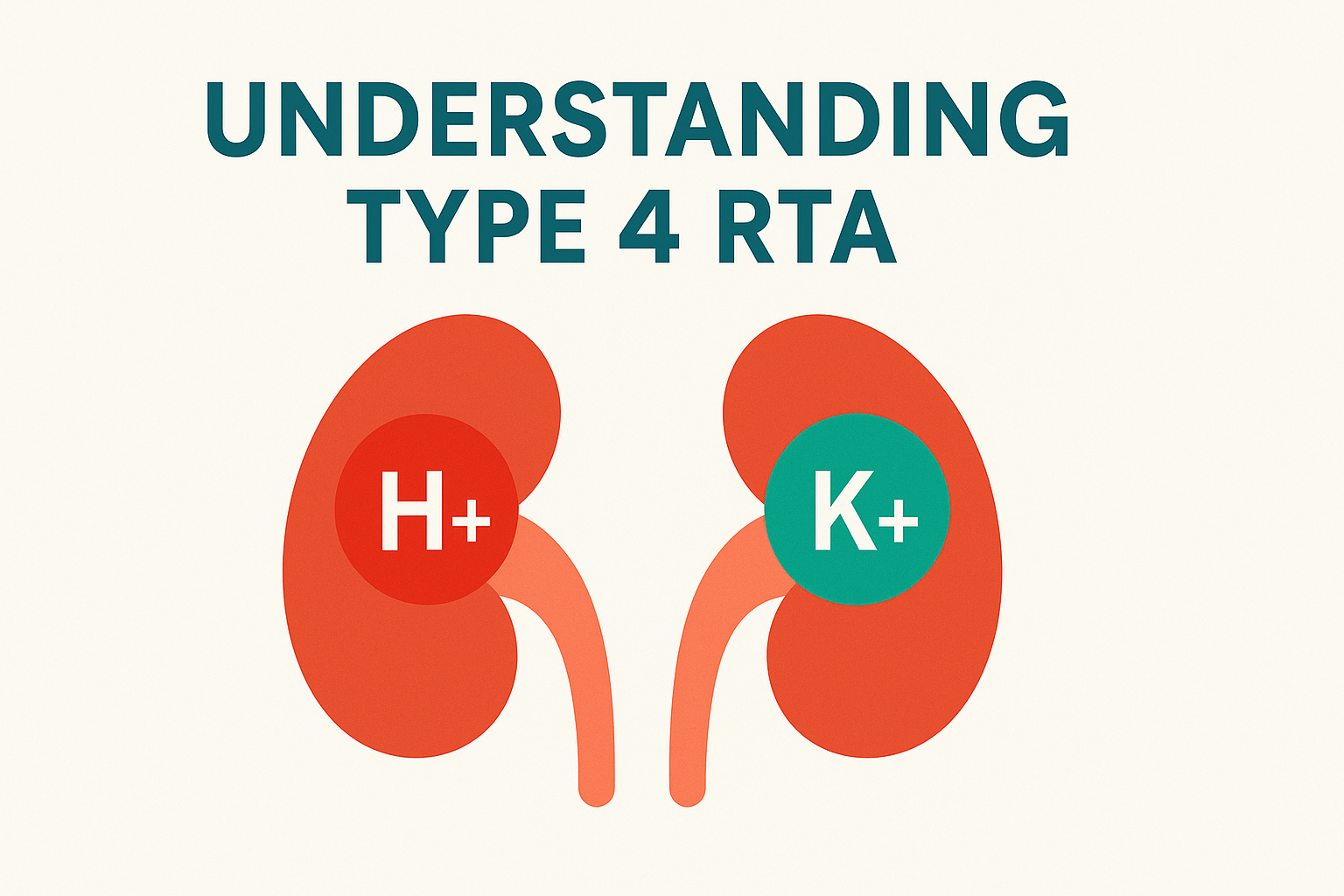What Is Renal Tubular Acidosis Type 4?
Renal Tubular Acidosis (RTA) Type 4 is a kidney disorder where your body retains too much acid, and potassium levels rise dangerously. This usually happens because of low aldosterone, a hormone that helps control acid and potassium. It’s more common in people with diabetes or chronic kidney disease.
Related Reading: What Is Chronic Kidney Disease (CKD)?
Signs and Symptoms: When to Be Concerned
Most people don’t realize they have RTA Type 4 until routine bloodwork shows high potassium (hyperkalemia). Some people experience:
- Fatigue
- Weak muscles
- Nausea
- Irregular heartbeat
If you live with kidney issues or diabetes and notice these symptoms, see your doctor as soon as possible.
What Causes Renal Tubular Acidosis Type 4?
The main cause is hypoaldosteronism, where your body doesn’t make or respond to enough aldosterone. Common triggers include:
- Type 2 diabetes
- Chronic kidney disease (CKD)
- Medications like ACE inhibitors, ARBs, or NSAIDs
- Autoimmune disorders
Helpful Link: Medications That May Harm the Kidneys
How Is It Diagnosed?
Doctors use blood and urine tests to detect acid buildup and high potassium. The key signs of Type 4 RTA include:
- Low blood bicarbonate
- High serum potassium
- Normal or mildly reduced kidney function
Your doctor may also use the ICD-10 code N25.81 for insurance and documentation.
Treatment Options for RTA Type 4
Treatment focuses on lowering potassium and fixing the acid imbalance. Options may include:
- A low-potassium diet
- Diuretics to help flush out potassium
- Adjusting medications
- Fludrocortisone, in some cases
Diet Tip: Avoid bananas, potatoes, and salt substitutes high in potassium.
More on Diet: Low-Potassium Foods for Kidney Health
Living With Renal Tubular Acidosis Type 4
Most people manage Type 4 RTA well with lifestyle changes and regular lab tests. Early diagnosis and routine follow-up with a nephrologist can make a big difference. If you’re living with diabetes, it’s especially important to keep your kidneys and blood pressure in check.
FAQs
A: In some cases, yes especially if it’s caused by medications or temporary hormone issues. Treating the root cause can lead to improvement.
A: No. Type 4 is unique because of its link to high potassium levels and aldosterone deficiency.

